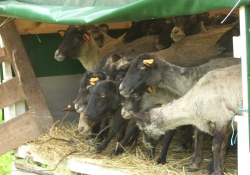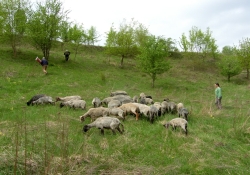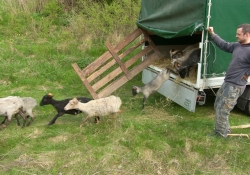
|
We began the mobile pasturage by sheep on the grasslands! (Action C6)
On the first day of May we began one of the most important activities related to the active conservation of xerothermic grasslands planned in the project: mobile pasturage by sheep. Sheep grazing is an effective way of deterring succession on xerothermic grasslands. Additionally, the animals decrease vegetational biomass and trample the ground, which improves conditions for the development of thermophilous plants. The mobile pasturage scheme we use, as opposed to stationary pasturage, makes it possible to graze areas where maintaining a permanent flock would be impossible (for example, due to the ownership structure of the land, poor road access to the site, etc.). We started pasturing in the grasslands next to the village of Zatoń Dolna, on land that is part of the Chojna Forestry Division. We brought 60 adult sheep there from our field station, where the animals spent the winter. The sheep were transported in a special vehicle in two groups of thirty individuals each. We also transported a camp trailer together with the sheep, which will be home over the next four months to the shepherds tending the flock and caring for the equipment required for the pasturage: fencing, water stations, sheep sheds, tools, etc. From the time the sheep are put out to pasture, they are under the constant care of two shepherds. The shepherds must ensure that the fencing around the grazing sheep is secure and provide fresh water to the animals. Additionally, the shepherds "help" the sheep maintain the xerothermic grassland in good condition by removing the shrubs (hawthorn, blackthorn) and trees (black locust, pine, pear) that appear there, whereas the sheep graze on the low vegetation (including invasive species of rye grass and calamagrostis encroaching on the grassland). The pasturage in Zatoń Dolna is scheduled for about two weeks, after which the flock will be transported to the next grassland.

     
|

|


 |

